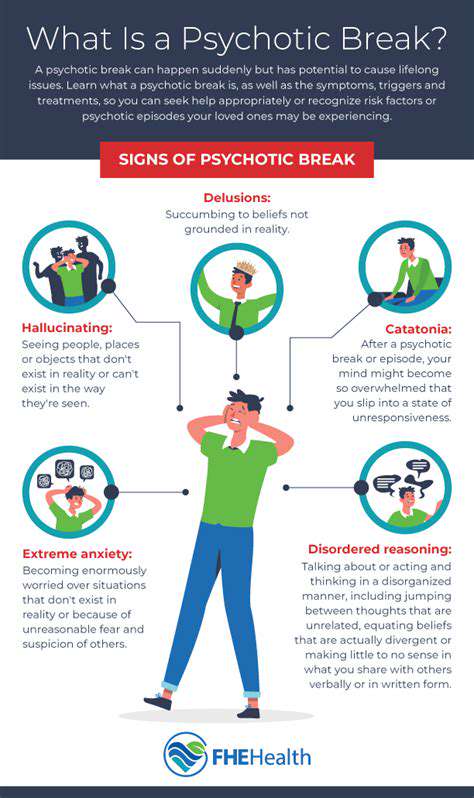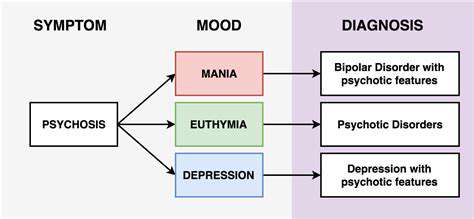Navigating Anxiety Psychosis: Signs and Treatment Options

Differentiating Anxiety from Psychosis

Understanding the Spectrum of Anxiety
Anxiety is a natural human response, marked by apprehension, nervous energy, or discomfort about future events or uncertain situations. This emotional state serves as an evolutionary safeguard, helping us anticipate and prepare for potential dangers. When these feelings escalate beyond typical levels—becoming overwhelming, persistent, and disruptive to daily functioning—they may indicate an anxiety disorder. Distinguishing between normal anxiety and pathological anxiety hinges on evaluating symptom severity, frequency, and duration.
Recognizing diverse anxiety disorders proves essential for proper treatment. Conditions like generalized anxiety disorder, panic disorder, social anxiety disorder, and specific phobias each present distinct symptom patterns requiring specialized diagnostic approaches and management strategies.
Identifying Physical Symptoms
Anxiety frequently produces physical manifestations that can resemble other medical conditions. These include palpitations, breathing difficulties, excessive sweating, tremors, and dizziness—all stemming from the body's natural fight-or-flight response.
Accurate differentiation between anxiety symptoms and other medical issues demands professional evaluation. Consulting healthcare providers ensures proper diagnosis and excludes other potential causes for similar symptoms.
Psychological Symptoms of Anxiety
Beyond physical reactions, anxiety disorders involve complex psychological components. Persistent apprehension, racing cognition, concentration challenges, irritability, and restlessness commonly occur. These psychological effects can profoundly disrupt daily activities, impair relationships, and diminish quality of life.
Symptom presentation varies dramatically across anxiety disorders, necessitating careful clinical assessment. Understanding these variations proves critical for accurate diagnosis and effective treatment planning.
The Role of Cognitive Distortions
Maladaptive thought patterns significantly contribute to anxiety maintenance and exacerbation. Common distortions include catastrophic thinking, overgeneralization, and polarized reasoning. For instance, anxious individuals might anticipate disastrous outcomes in ordinary situations, fueling avoidance behaviors and heightened distress.
Recognizing and restructuring these cognitive patterns forms a cornerstone of effective anxiety treatment. Therapeutic interventions provide practical tools for developing more balanced, realistic thought processes.
Differentiating from Other Mental Health Conditions
Anxiety disorders often share symptom overlap with conditions like depression, OCD, and PTSD, complicating diagnosis. Comprehensive evaluation considering symptom patterns, duration, and personal history becomes essential for accurate differentiation.
Professional mental health assessment remains indispensable for distinguishing anxiety from similar conditions. Qualified specialists can conduct thorough evaluations and develop appropriate, individualized treatment approaches.
The Importance of Professional Support
Effective anxiety management typically requires integrated treatment strategies combining psychotherapy, pharmacotherapy when indicated, and lifestyle modifications. Cognitive-behavioral approaches help develop coping skills and modify maladaptive patterns, while medications may help regulate neurochemical imbalances. Lifestyle factors including regular physical activity, balanced nutrition, and proper sleep hygiene significantly influence symptom management.
Personalized treatment planning under professional guidance maximizes therapeutic outcomes. Mental health professionals can tailor interventions to individual needs, monitor progress, and adjust approaches as needed.

Importance of Early Intervention and Support Systems
Early Identification and Intervention
Timely recognition of anxiety symptoms—particularly in youth—proves critical for effective management. Detecting subtle indicators like excessive worry, avoidance patterns, or somatic complaints can dramatically alter condition progression. Early intervention facilitates skill development before anxiety becomes debilitating, potentially preventing subsequent complications. Prompt action also helps avert entrenched maladaptive patterns that exacerbate symptoms over time.
Educators, family members, and healthcare providers serve vital roles in early detection. Cultivating supportive environments with open communication enhances intervention effectiveness. Understanding individual stressors and implementing targeted support programs builds resilience and promotes healthier coping strategies.
Building Supportive Environments
Establishing nurturing environments at home and school proves essential for anxiety management. Creating spaces where individuals feel accepted and understood encourages open expression of concerns without fear of judgment. Consistent routines, clear expectations, and reliable support systems help reduce uncertainty—a key anxiety trigger.
Educational institutions can implement comprehensive support systems through staff training and peer support initiatives. Developing anxiety-aware school cultures with designated safe spaces significantly improves student well-being and academic functioning.
The Role of Family Support
Families provide indispensable support for individuals managing anxiety. Emotional availability, practical assistance, and nonjudgmental understanding create crucial safety nets. Effective family support involves active listening, validating experiences, and assisting with daily challenges when needed.
Access to Professional Resources
Specialized mental health services form the backbone of effective anxiety treatment. Early access to qualified professionals—including therapists, psychiatrists, and counselors—enables development of personalized management strategies.
Seeking professional help demonstrates strength and commitment to well-being. Expert guidance provides evidence-based tools and techniques for navigating anxiety challenges and preventing potential complications.
Addressing Underlying Factors
Anxiety often stems from complex interactions between genetic predisposition, environmental stressors, and life experiences. Comprehensive treatment addresses these root causes through therapeutic exploration, medication when appropriate, and lifestyle adjustments.
Holistic approaches considering biological, psychological, and social factors yield more sustainable outcomes than symptom-focused interventions alone.
Promoting Self-Care and Coping Mechanisms
Effective anxiety management requires active self-care practices. Regular physical activity, balanced nutrition, and adequate sleep form foundational elements. Incorporating relaxation techniques like mindfulness, deep breathing, or progressive muscle relaxation provides practical symptom management tools.
Developing personalized coping strategies empowers individuals to actively participate in their recovery process. Skill-building in emotional regulation and stress management fosters long-term resilience and improved quality of life.